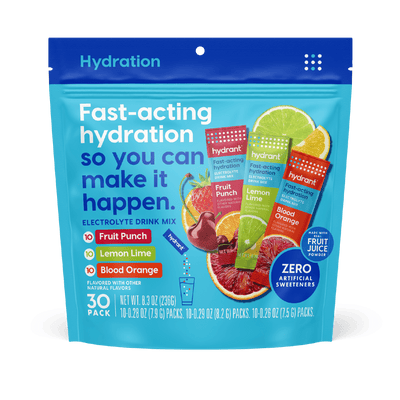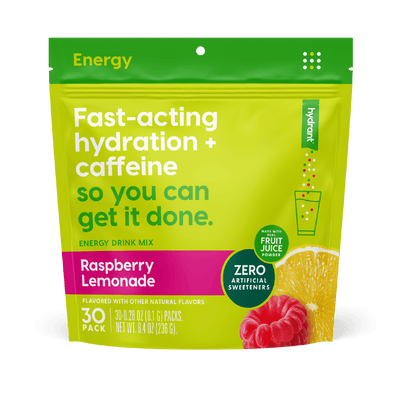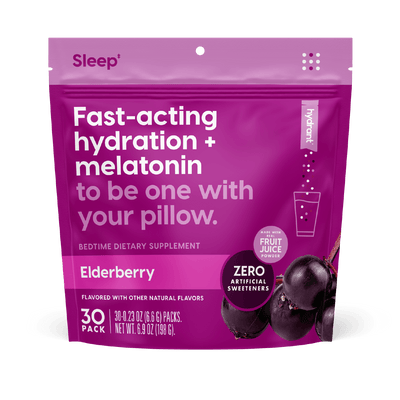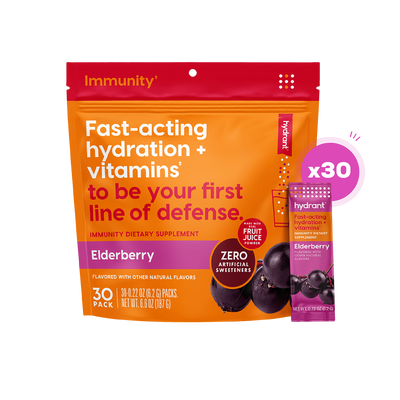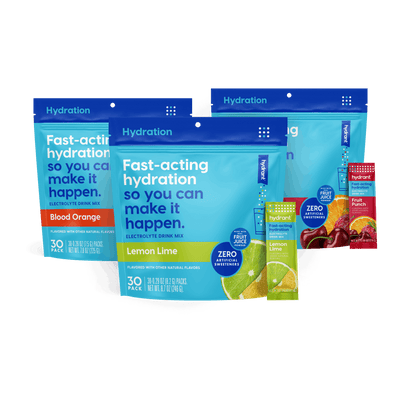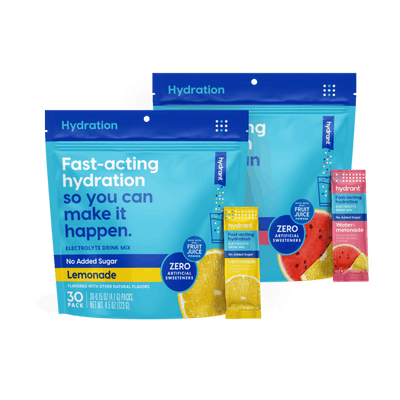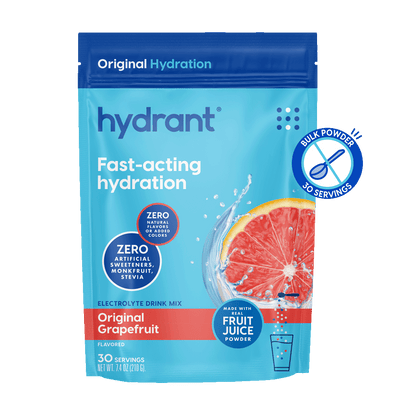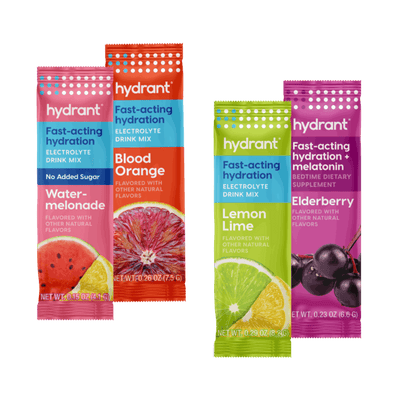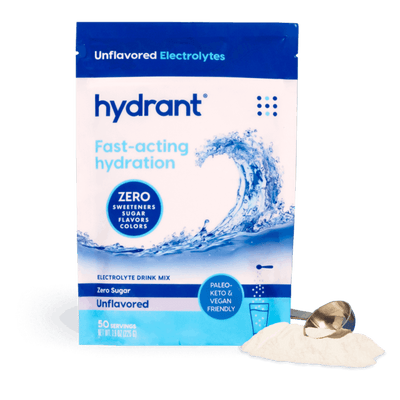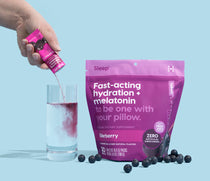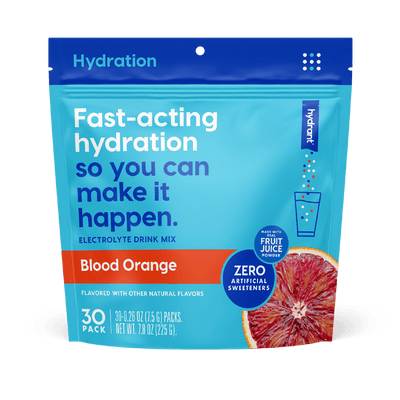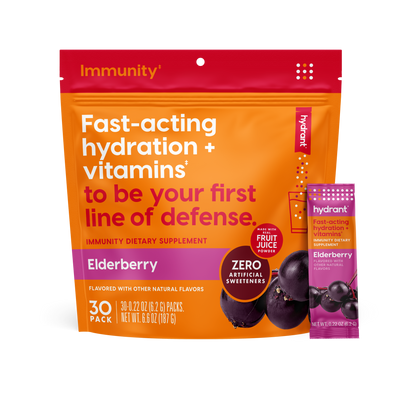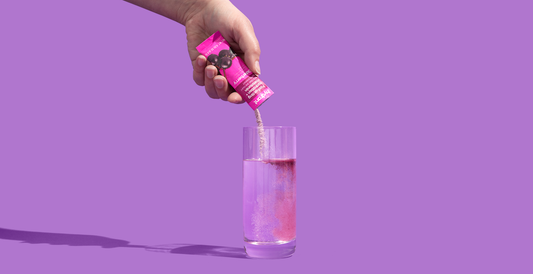One pack of Hydrant contains only eight ingredients, most of them salts. With low sodium diets on the rise, where does Hydrant fit into your routine? Can you still rely on Hydrant to keep you on your game, even when trying to reduce your salt intake?
We dove into the science to differentiate between healthy hydration salts and excess dietary salts. (Don’t get salty, the science here is pretty simple!)
You need sodium in your diet
Sodium performs a number of critically important roles in your body. For one, the flow of positive sodium ions into nerve endings is critical for nerve-to-nerve communication via electrical signals. When a sodium ion enters a nerve cell, a temporary charge gradient is created: the inside of the nerve becomes slightly positive while the outside becomes slightly negative. Much like hot air rises or gas flows from an area of high pressure to one of low pressure, an electric current moves across the charge gradient. This electric current is the “message” passed from cell to cell. Without free sodium ions, our brains wouldn’t fire. So sodium is pretty important.
How do sodium ions relate to salt?

When sodium is bound to chlorine, a crystalline solid forms. It is this solid that we recognize this as table salt, sea salt, and the salt in the ingredient list of Hydrant. Many of the types of food we eat, contain salt in varying amounts. Some of this salt we incorporate into our body, some we excrete in urine, and some we lose in sweat.
Why are low sodium diets recommended?
Sodium may be essential to survival, but can be problematic if consumed in excess. Numerous scientific studies have shown that increased sodium intake is correlated to increased blood pressure [1, 2]. Exactly how high sodium levels increase blood pressure is not yet fully understood. However, we do have a decent understanding of the consequences of increased blood pressure due to excess sodium consumption. Long term, abnormally high blood pressure is diagnosed as hypertension, and our risk of hypertension can also be correlated to sodium intake [1].
This story doesn’t end here though. Hypertension is a major risk factor for cardiovascular disease (disease of the heart and blood vessels), and cardiovascular disease is the leading cause of death in the U.S. [1]. Therefore, many scientists agree that reducing the amount of sodium in people’s diet may be a good way to tackle cardiovascular disease.
Since lower sodium intake is associated with decreased blood pressure and decreased risk of cardiovascular disease, patients suffering hypertension and heart conditions are generally advised to cut their sodium intake as a preventative measure. In addition to this, dietary sodium restrictions are also recommended for patients with chronic kidney disease as their kidneys cannot properly excrete sodium [3].
How much sodium is too much and how does this compare to the sodium in Hydrant?
Sodium intake is generally measured by the amount of sodium secreted in a person’s urine – this is the metric used in studies looking at how much sodium we need and how much is too much. The amount of sodium our bodies actually need to keep us balanced and alive is around 500 mg per day, which is equivalent to about ¼ teaspoon of salt [2]. However, the recommended daily intake is 2300 mg per day – which is around one teaspoon of salt [1]. One serving of Hydrant contains 260 mg which works out to be 11% of your daily recommended intake.

Having said this, over 90% of Americans exceed this recommended level [1, 2]. The average intake of Americans is around 3200 mg of sodium per day [2], with a “usual” sodium consumption being in the range of 3000-5000 mg per day [1]. So, for a typical American, a packet of Hydrant would then contribute 8% of their sodium intake that day.
Why do we so often exceed the limit? Many foods contain high levels of sodium. Some of these foods are obvious as they taste “salty” such as soy sauce, bacon, and pickles. However, many processed foods can contain surprisingly high sodium levels depending on variety and brand. Bread, cereal, and sauces are the usual suspects [4].
Low sodium diets generally recommend a daily limit of 2000 mg of sodium per day [3]. As you might notice, this is not very different from the normal recommended daily intake of 2300 mg/day. A “low” sodium diet is more aptly named a “lower, normal” sodium diet – especially when compared to the daily Sodium intake of most Americans.
For someone on a low sodium diet of 2000 mg per day, a serving of Hydrant would be 13% of their daily recommended intake. In other words, a pack of Hydrant a day will not get in the way of consuming a healthy daily dose of sodium.
The amount of salt contained in many household food items, can make reducing sodium intake difficult. But all hope is not lost. In countries such as the UK and Finland, government policies to encourage food companies to include less salt in their products have been effective in reducing dietary sodium intake, as well decreasing national blood pressure levels and cardiovascular deaths [1].
Conclusion
Sodium is a vital mineral. But increased salt intake may push up our risk of hypertension and cardiovascular disease. So we should be mindful about how much sodium we consume. Low sodium diets are not hugely different normal recommended intake values, but most of us are consuming far more than the recommended level of sodium.

If you’re considering a low sodium diet, the first person to consult is your doctor or nutritionist about about what to eat or not eat. You should also keep in mind that low sodium diets aren’t necessarily recommended for people who may lose large amounts of sodium in sweat, such as athletes and those exposed to major heat stress in their work [5]. To be sure, consult your doctor.
When incorporated into a balanced diet, Hydrant can be an effective part of your lower sodium lifestyle. (It’s certainly more effective at boosting hydration than that extra handful of potato chips.)
Never have an off day. (Ahem, that includes your diet). Try Hydrant today!
Writer: Josie Elliott
Editor: Elizabeth Trelstad, www.hellobeaker.com
